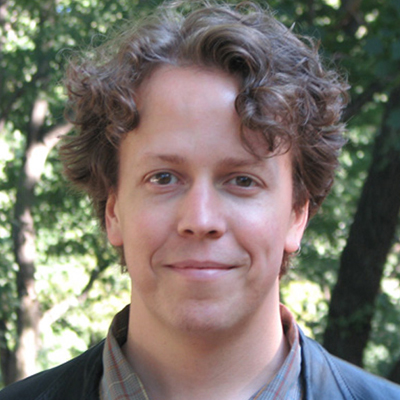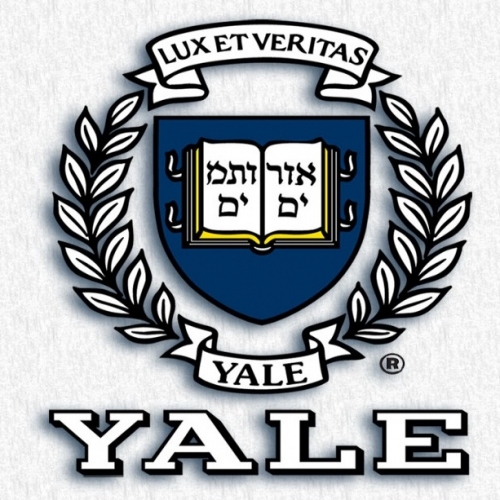Understanding the genetic basis of birth defects and cancer
The human body has analogies to the economy. An individual gene is an individual person, which carries out a specific function in the larger organization of the cell much like a person functions in a business. These local, national, and global businesses then combine to create a larger economy. Economists spend a lot of effort modeling how individuals collectively produce the complex dynamics of the economy. Similarly in biology, individual genes combine functions to control cellular behavior. Cells then come together to create even more complex organizations from tissues like bone and muscle to organs like the heart and to the entire body. One difference is that biologists are able to perform controlled experiments to precisely establish cause and effect while such precision is difficult in economics. Dr. Scott Holley, Associate Professor of Molecular, Cellular and Developmental Biology at Yale University, studies how the embryo builds itself into a mature organism, or how genes control what cells do and how cells physically work together to create the musculoskeletal system. Through his discoveries, Dr. Holley reveals the mechanisms of human vertebral development and helps explain the genetic basis of both birth defects and cancer, providing insights that address some of our most pressing medical problems.
Scoliosis is one of the most common structural birth defects afflicting 1 in every 100 individuals. Since we do not yet fully understand the causes of potentially debilitating malformation of our backbone, it is hard to diagnose individuals with scoliosis that may eventually resolve itself and distinguish them from individuals with a mild form of scoliosis that is likely to worsen over time.
By studying the early development of the vertebral column, essentially how the vertebrate embryos grows from head to tail and how the repetitive pattern of vertebrae is created, Dr. Holley and his team hope to understand how genes control this process as well as the biomechanics of body elongation and segmentation.
By studying a simple organism like the zebrafish, which are small, easy to grow, inexpensive, and optimal for experiments, the Holley Lab has found that the same genes control vertebral patterning in zebrafish as in humans. In fact, mutations in the genes that cause scoliosis in zebrafish are the exact same genes that cause scoliosis in humans. Thus the Holley Lab can use the zebrafish as a proxy for understanding human development and disease. Even more astounding is the fact that the genes that control development are also the same genes that are mutated in cancers. This is because these are genes that control cell behavior, and mutation of these genes in an embryo leads to a birth defect while mutation of the same genes in an adult can lead to cancer. Ultimately, Dr. Holley hopes to better facilitate early diagnosis and treatments by providing a solid basis for understanding vertebrate development.
Current research projects include:
- Scoliosis Genetics: By genetically modifying zebrafish, Dr. Holley seeks to understand how genes control body elongation and segmentation. Because zebrafish are small and mature rapidly, large inbred families can be generated to help identify new mutations in genes that correlate with scoliosis. Additional experiments are then performed to directly demonstrate that the mutation causes scoliosis and to determine the cellular and tissue-level changes that lead to the abnormal backbone.
- Biomechanics of Vertebral Column Formation: The innovative thrust of the Holley Lab is in integrating their knowledge of genetic control with their knowledge of cellular and tissue biomechanics to understand how our complex bodies develop from simple embryos. The Holley Lab combines genetic manipulation with live imaging of the embryo using fluorescence microscopy, which allows them to image cell movement, connective tissue deformation, and single molecule interactions in live embryos. By computer tracking of the motion of thousands of cells and subsequent data analysis using tools from fluid mechanics and soft matter physics, the team extracts quantitative information about how genes work together to create complex behaviors of developing tissues. Thus, Dr. Holley is able to understand a great deal about how genes, cells and tissues give rise to our vertebral column.
Bio
Even before kindergarten, Dr. Scott Holley had an interest in biology. Growing up in Mississippi in the 1970’s and the 80’s, there weren’t many pharmaceutical or biotech companies, and Dr. Holley naturally thought that the only way to have a career in biology was to become a physician. From 8th through 10th grade, he participated in a team-based creative problem solving competition called Odyssey of the Mind. There, he and his team created manned vehicles that had to meet different criteria for speed, distance, power-source, etc. This was really a team-based engineering problem, resembling much of what happens in a real modern laboratory. His team won the national/international competition in that last year, and the other teams had to “suffer the indignity of losing to the team from Mississippi.” This experience got him interested in engineering, but it wasn’t until he took a genetics course in college that he realized that he could combine research and engineering with biology. He thus decided to pursue a Ph.D. and a research career rather than medicine.
While Dr. Holley has focused on basic research, he has received support throughout his career from cancer research foundations. As a graduate student, he was the second The University of Chicago Cancer Research Foundation Women’s Board Fellow. As a postdoc, he was a Damon Runyon-Walter WinchelI Cancer Research Foundation Postdoctoral Fellow. As a junior professor, he was a Research Scholar of the American Cancer Foundation and later chaired one of their grant review committees. His lab has also been supported by grants from the March of Dimes, the National Science Foundation, the National Institute for General Medical Sciences, and the Eunice Kennedy Shriver National Institute for Child Health and Human Development.
Dr. Holley met his wife Dr. Dörthe Jülich in Germany where they were both working in the lab of Nobel Laureate Dr. Christiane Nüsslein-Volhard. Dörthe moved to the US with Scott when he started at Yale, and is a research scientist who now helps run the lab. They are well trained to attend to the wishes of their French bulldog Zelda, and outside of research, they spend their time cooking and hiking.
Website: http://www.yale.edu/holleylab


